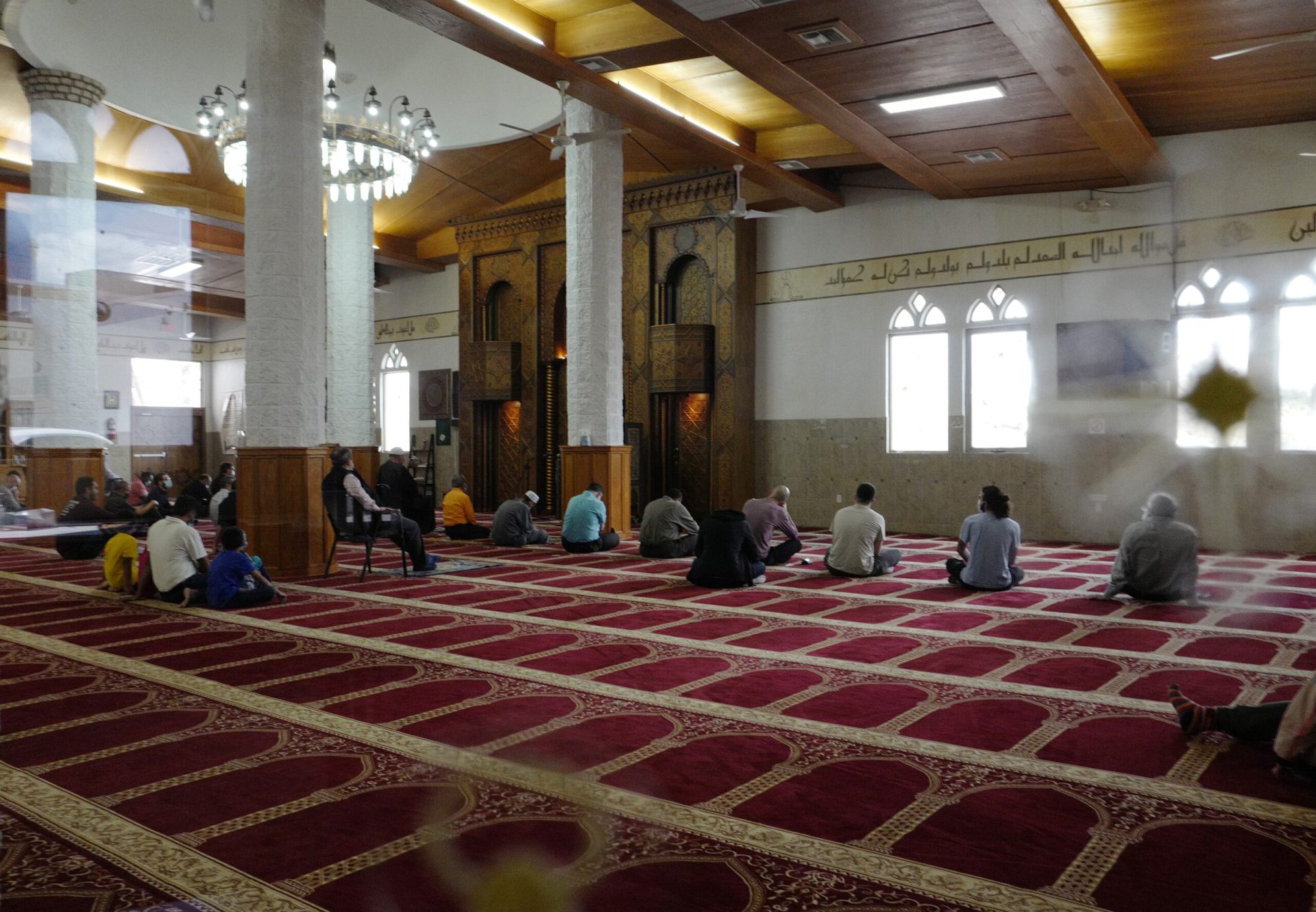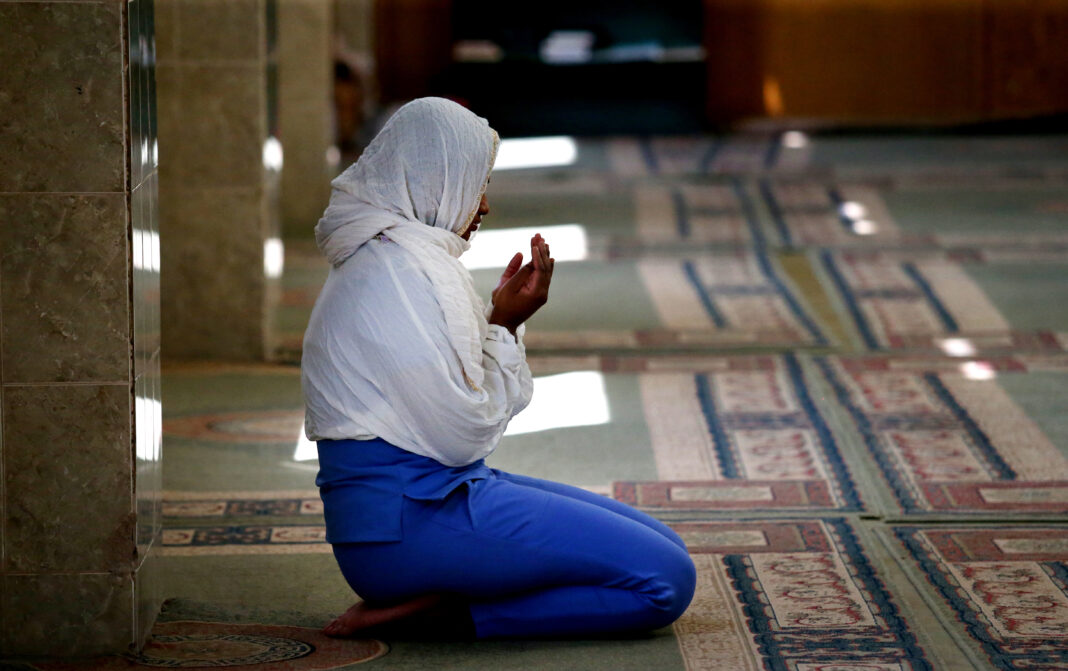Two years into the pandemic, much has clearly changed and much has also stayed the same. One of a few constants during times of distress has always been faith, and since March 2020 — when COVID-19 was first confirmed in the Rio Grande Valley and has since claimed thousands of lives in the area, and which has also left many with mental health struggles — the region’s respective spiritual leaders have taken various approaches to helping their communities maintain an intimate relationship with their God and with each other.
This week, members of the Islamic, Jewish and Methodist communities attested to those efforts, reflecting on what’s worked, and what they’re still working on.
These leaders pointed to what they’ve seen as a resilience among the faithful, resilience that’s led to a substantial increase in outreach efforts to help people in need, forced their congregations to become more tech savvy and therefore better connected, successfully encouraged vaccinations as a form of godly protection rather than man-made, and created a stronger and more versatile community able to lift themselves up from despair.
For many, adaptation amid struggles has been key to achieving this and more.
“One of the biggest obstacles was in our faith and the way we pray, it’s usually a very close connection between each other,” Dr. Hamzah Saei, board president of Al Khair Islamic Society of Rio Grande Valley, said. “The concept and the idea behind that is the sense of unity — standing shoulder to shoulder when we pray.”
Pandemic guidance early on was to socially distance by at least 6 feet. This presented a challenge for those whose faith requires contact.
“Many people were questioning: Are we allowed to pray this way since we’re supposed to pray shoulder to shoulder and foot to foot in unity? In speaking to scholars who said obviously the protection of the community comes before anything else, we were able to accommodate those requirements and pray 6 feet apart for a good portion of the pandemic until we were able to get vaccinated — which we all encouraged,” Saei explained.
For many leaders of faith in the Valley, the sense of community that had brought their congregations together suddenly felt lost.

Friday ,March,04,2022. (Delcia Lopez/The Monitor | [email protected])
Now years after the first case was confirmed, they’re able to gauge with some semblance of accuracy how COVID-19 placed a strain on fellowship.
“Not being able to gather was brand new for our congregation and I think for a lot of people because so much of our faith is based on being together as a community,” Pastor Laura Heikes of the First United Methodist Church of McAllen said. “That’s kind of the heartbeat of our church. We say we’re a faith family. To be a family that can’t gather together physically because you might endanger other members of your family by being together has been a challenge.”
This Methodist congregation took to worshiping virtually, as many other communities have done. And if there was a silver lining to worshiping via stream, it’s that commitment to fellowship now has no boundaries.
In fact, Heikes said her congregation is a little more tech savvy, which only strengthens connections.
“We’ve probably done things that we knew would be good before, but you just get too busy — like getting online,” she added. “This (pandemic) made us get online, and learn how to be online, and learn how to be a family online.”
For the Islamic community, however, the closeness that is shared through worship seemed to be compromised.
“Handshakes are huge in our community as well. Over the last few years I’ve seen people kind of shy away from that slightly,” Saei said. “Fortunately none of that seemed to have taken away the faith from each other. I think we all understand that we’re all in the same boat, fighting the same pandemic, fighting the same disease. You can tell somebody wants to shake your hand and hug you to kind of go in with a fist bump or an elbow bump if you will. It’s kind of been interesting to watch that change over the past few years.”
With many struggling throughout the course of the pandemic, many faith leaders were also able to see the positive effects that the pandemic may have had on locals.
For instance, COVID-19 may have reinvigorated the commitment within communities of faith to support the vulnerable.
As a result, Heikes’ congregation increased its monthly food outreach efforts by 1,400% during the pandemic, and volunteer recruitment efforts improved by necessity as well.
“It created connections in new ways in our church,” Heikes said. “It also stretched us in outreach. Because it was such a difficult time economically in the beginning for so many people in our community, we really stretched to fill some of the gaps and make it easier for people. Our church went from feeding 40 to 50 families every month to 750 families a month. You can imagine the number of volunteers needed to feed 40 (families) versus the number you need to feed 750. It was phenomenal.”
Efforts were also placed on vaccination encouragement in the Islamic community, with the benefit of arming themselves with vaccine protection being presented in ways that appealed to their faith.
“I think (the pandemic) helped bring everybody together, and I think we saw that in our community as well where the concern was not just for our community but for everybody else,” Saei said. “The idea behind the fact that there’s a lot of physicians in our community and congregation, and we made it a very large effort to preach to everyone in our community and others to make sure to get vaccinated. We didn’t look at it as a man-made creation. We looked at it as God gave us the ability to make this vaccination to protect us from further damage.”
For Rabbi Asher Hecht of Chabad RGV, attempting to find normalcy in the age of COVID-19 is not enough. He said that the community needs to take the lessons learned throughout the pandemic and learn from them to become better.
“We need to be not only getting back to normal, but one thing the pandemic has to accomplish is that somehow it made the world better — better than before,” Hecht said. “To be back where we were is good and exciting. It gives off a sort of positive energy to know that we’re able to get back to the way things were. Let’s take one lesson from this — that somehow this has tested us to make us stronger, more successful, more vibrant, and more accomplished human beings.”
The rabbi said that despite the hardships experienced by many in his community, he did not observe anyone struggling with their beliefs as a result of the pandemic.
“On the contrary, most people are looking not from a place of skepticism but rather from a place of wanting to understand and grow,” Hecht said. “No one is saying, ‘I’m stopping believing in God because He allowed such a terrible pandemic to come into the world.’ I haven’t heard that from one single person. I personally haven’t heard that, but that doesn’t mean that there aren’t (people) out there that question God because of this or question His mercy or His existence. The answer to me would be that God is constantly testing our faith.
“It’s for one purpose — so that when we choose the faithful path, it’s stronger because now it came through a real sense of choice.”
View Monitor photojournalist Delcia Lopez’s full photo gallery here:





